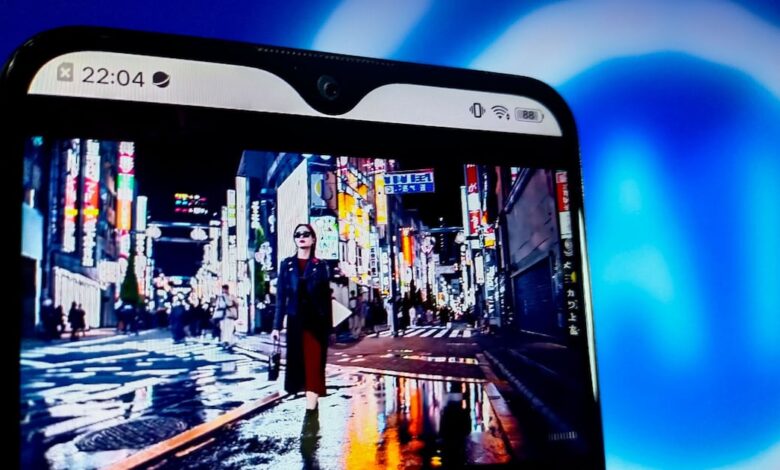Is Generative AI the New Fashion-Tech Bubble?

It’s been just over a year since Kering introduced Madeline, a ChatGPT-powered shopping assistant that consumers could use to search for items and get product recommendations on KNXT, an e-commerce site the luxury conglomerate has quietly used as a testing ground for digital innovations.
At the time, KNXT promoted it on Twitter (since renamed X) as the end of endless scrolling in search of the perfect luxury items. The reality was less dramatic: Madeline’s answers proved limited and robotic in early testing, suggesting products that weren’t always the best fit for the occasion and speaking in what sounded like marketing copy. A notice on the site now says it is under maintenance with no reopening date mentioned. Kering did not respond to requests for comment.
Madeline appears to have met the same fate as some other generative AI-powered experiments that hit the market as excitement grew over the capabilities enabled by large language models following ChatGPT’s release in late 2022. Right away, companies began testing the technology to conjure design concepts, create imagery for marketing campaigns, write product descriptions and chat with customers. McKinsey estimated in 2023 that generative AI could add as much as $275 billion to the operating profits of the fashion and luxury sectors in the next three to five years.
There’s still a good deal of optimism about generative AI’s potential and billions in investment flowing into start-ups trying to realise it. Swift adoption, however, is looking less certain. “While more analysis is needed, the rapid developments in Generative AI have not yet led to an explosion of AI use among businesses between September 2023 and February 2024,” the US Census Bureau noted in a March report.
It’s not just chatbots running into challenges. Levi’s told The Business of Fashion in a statement that it had no plans to scale a pilot programme announced last March that would use AI-generated models to increase the diversity of models on its e-commerce site. It was one of the earliest and, at the time, most ambitious uses of the technology, but faced a firestorm from critics pointing out that human minorities already struggle to get modelling jobs.
“We do not see this pilot as a means to advance diversity or as a substitute for the real action that must be taken to deliver on our diversity, equity and inclusion goals and it should not have been portrayed as such,” the company said in its statement.
The decision may have been motivated by the criticism the company received as much as any technological shortcomings. But generative AI’s limits are becoming increasingly apparent. More than a year after generative models first captured public attention, even the most advanced ones still fabricate facts, make basic maths errors and produce imagery with physical or historical inaccuracies.
They can be helpful for certain jobs, but often “in the same way that it might occasionally be useful to delegate some tasks to an inexperienced and sometimes sloppy intern,” as tech watchdog Molly White wrote recently.
It’s too early to declare generative AI a flop. But questions are growing around whether it can live up to the extraordinary expectations placed on it.
“AI will eventually be transformational, but GenAI has a lot of technical problems, especially with reliability, and is unlikely to live up to the current hype,” Gary Marcus, a prominent AI sceptic who recently wrote about the likelihood of a bubble burst within the next 12 months, said in an email. “It may be years or even decades before most of those promises are realized.”
The Hype Cycle
Emerging technologies often follow a similar trajectory — so similar that Gartner, a technology research and consulting firm, codified it in 1995 and dubbed it the “hype cycle.”
A new innovation appears that generates a lot of excitement and publicity. Based on a few high-profile successes, expectations become inflated, reaching a peak. But when the early experiments don’t deliver, a period of disillusionment follows. If all goes well, it eventually climbs back up as the next generations of the technology appear, the returns become clearer and adoption increases, though there’s no guarantee that will happen. So-called magic mirrors in stores never took off, and dreams for the metaverse might never come to fruition.
“We have a placement of GenAI in our hype cycle for retail, which is right at the peak,” said Sandeep Unni, a senior director analyst in Gartner’s retail practice.
Some retailers hoped LLMs could revolutionise online shopping, for example, by allowing for genuinely conversational chatbots that understand a customer’s queries and intent as well as the context around them, like that a wedding is formal while a picnic is not. They could then answer questions and recommend products.
There’s still a distance to go before most retailers would want one of these chatbots, whose knowledge comes from general data scraped off the internet. Amazon, which has invested billions in generative AI, has received middling reviews for Rufus, the shopping bot it started publicly testing in February, with a reviewer for The Washington Post deeming it “mostly useless” and saying they didn’t trust its recommendations. Amazon said it would continue refining the bot, which is under development.
“Our biggest learning was that people want expert reassurance,” said Jake Stark, co-founder and chief executive of Good Sort, a start-up focused on AI shopping assistants that recently pivoted its approach.
The company, previously called ShopWithAI, initially had an AI chatbot that recommended clothes based on different celebrities’ styles. That product wasn’t scalable, Stark said. It still offers the option for men’s fashion but has also expanded into watches, where its AI uses writing from a panel of experts to form its suggestions.
One of the most promising applications of generative AI in fashion is design, where factual accuracy is less an issue. The technology can allow designers to rapidly whip up new ideas and even maintain their style by training the AI on past work. Designer Norma Kamali is all-in on this use of AI and busy establishing a system that can help carry on her legacy once she steps away from her label. Start-ups are racing to build their own fashion-specific tools from image-generating AI models.
Yet it remains an open question whether AI-driven design will take hold widely. Some designers may reject it because, rightly or not, they feel it replaces or devalues human creativity, a feeling consumers could share. The brand Selkie already faced backlash from customers for creating imagery with AI. There are unsettled questions around intellectual property issues, too. Revolve was an early adopter and released a small AI-designed collection, but the company declined to say whether it will continue to use the technology.
Hillary Taymour, founder and creative director of the brand Collina Strada, quickly worked the image generator Midjourney into her design process and has continued to use it, though she hasn’t been impressed with the advancements in the tool’s latest iterations. What drives AI’s creative abilities are in many cases the same unexpected results that pose problems when generating text. As developers work to reduce these hallucinations, they may also be stripping out the AI’s creative power. Maybe the AI is better at reproducing the stereotypical idea of a dress, but that’s not necessarily what a design label wants.
“I don’t find it as creatively stimulating as I used to, so what I do is I set it to an older version to continue to use it,” Taymour said.
Generative AI’s Future
These issues could ultimately prove surmountable. AI systems can allow users to adjust what’s referred to as “temperature” — basically the amount of randomness in the output — which could let you define how creative you want the AI to be. As for obstacles facing chatbots like product knowledge and hallucinations, where the AI’s output veers into the false or absurd, retailers are dealing with them using methods like fine-tuning models through specialised training and a technique known as retrieval-augmented generation that allows the bot to draw answers from a separate knowledge database.
“How you create a customer experience with this, mitigate the downsides — such as hallucination — and then leverage the unique advantages, that’s where I see this technology going,” said Tian Su, vice president of personalisation and recommendation at Zalando, where she works on applications of AI.
Zalando introduced its own AI shopping assistant to select geographies last year. While Su acknowledged the technology isn’t perfect, she said it still adds value for users. The half-million customers who’ve had conversations with the bot may not always know the search keywords to use to find what they want, but through a back-and-forth with the AI, they can narrow down results or discover new products. Su said no other technology allows you to have conversations like this simultaneously with every customer.

Established features could also benefit from generative AI, she added. Zalando is developing a form of search where the user types into the search bar and the results they see refresh in real-time. It’s like a chatbot that dispenses with all the chatting.
There are simple tasks where generative AI already seems capable, like writing basic product descriptions. Adobe recently introduced tools in Photoshop that let users fill in space with generated imagery and create backgrounds that can be used for marketing assets. Taymour said she regularly uses ChatGPT to write professional emails.
And the technology keeps improving. Gartner predicts generative AI will reach a “plateau of productivity,” where there are viable products with mainstream adoption, in about five years. Challenges solving hallucinations, IP and security issues and regulation could all derail that, Gartner’s Unni warned. Retail businesses have the additional obstacle of finding talent to help them test, measure and scale generative-AI projects that provide actual returns. But unlike a fanciful concept such as the metaverse, generative AI is really an extension of AI more broadly, Unni said, and the value proposition there is much more established.
There are real limitations to overcome first, though, and no assurances they’ll be figured out. But a product doesn’t have to be revolutionary to be useful. Generative AI might change online shopping or the ways brands design and create imagery, or it might not. It could wind up finding subtle uses in the background that evolve what already exists, the way algorithms already have.
“I think maybe that there is more excitement than what it is,” Su said, emphasising that even her “maybe” comes with a question mark. “But there’s something real in it.”



